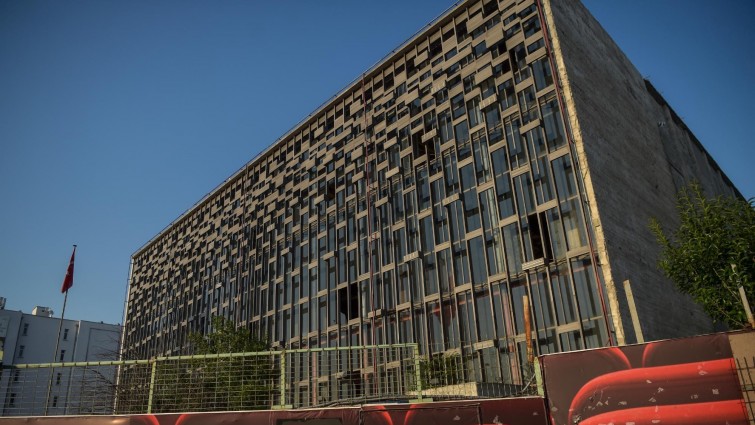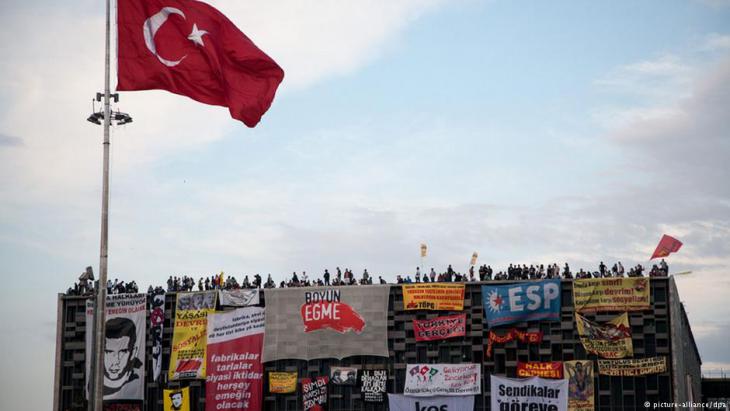More than merely prestige?

In Istanbul's Taksim Square, in the heart of the metropolis on the Bosporus, a dark concrete skeleton rises ominously, iron bars hanging from its unkempt facade. Glossy posters advertise a glorious future: this 52,000 square metre space will soon host one of the most modern cultural centres in the world containing an opera house, concert halls, cinema and exhibition spaces. The new Ataturk Cultural Center (AKM) will boast architectural prowess, acoustic superiority, and is set to become a magnet for world-class international stars. That's the plan, anyway.
As the dilapidated AKM awaits its glorious future, its glamorous past is fast fading away, however. Once one of the most modern buildings in Turkey, it was the fourth-largest cultural centre in the world when it opened in 1969.
Formerly a symbol of the modern secular republic
With Verdi and plays by Arthur Miller on the bill, it expressed the lofty western cultural aspirations of the "Kemalist" elites who forwarded the ideology of the secular founders of the Republic of Turkey.
But since the closure in 2008 of the large concrete structure with its prominent glass front, opinions have been bitterly divided about how this great symbol of modern secular Turkey should be reconstructed. Atilla Koc, then Minister of Culture and Tourism of the ruling AKP party, moved to demolish the former opera house. Civic initiatives and architects meanwhile fought to preserve it as an architectural icon. They saw a potential demolition by the governing AKP party, which has increasingly restricted artistic freedom in Turkey, as synonymous with the demise of a once secular nation.
During the Gezi protests in the summer of 2013, demonstrators made the AKM a symbol of resistance to AKP rule. They hung illuminated banners on the facade reading, "We will not bow" and "Tayyip, be quiet" – a reference to reactionary president Recep Tayyip Erdogan – and also occupied the rooftop.

In the years that followed, discussions continued as to the fate of the building. Meanwhile, the cracked windows and the crumbling facade of what was once the pride of modern Turkish society became, for some, symbolic of the deterioration of the country.
New AKM: a "recomposition" of the old
Yet when architect Murat Tabanlioglu was commissioned to undertake the massive restoration and expansion of the AKM, it was seen as a victory for those who supported the preservation of the Kemal heritage, since the architect's father, Hayati Tabanlioglu, designed the existing building. When Tabanlioglu presented his vision for the space, it was announced that the core of the former opera house would be preserved and the prominent glass facade reconstructed.
Other characteristic elements will also be brought back to life, including the free-floating aluminium staircase typical of the 1960s which gives the foyer its character.
"We will continue in my father's spirit" said the architect of his "recomposition" of the AKM. However, not everyone finds this pledge convincing. Indignation spread when it was announced that a large red-glass sphere would decorate the entrance.
To many, this element was reminiscent of the cupola of a mosque and is symbolic of how the AKP has increasingly imposed its Islamic religious views on a Turkish nation that was established as a secular state. But Tabanlioglu disagrees with this interpretation: "First of all, red is the colour that I personally associate with opera," he said. "The spherical shape symbolises the semi-circular arrangement of the seats in a concert hall that generates the best acoustics." Tabanlioglu was first and foremost inspired by the "total theatre" concept of Bauhaus architect, Walter Gropius.[embed:render:embedded:node:31402]As the Turkish government continues to censor and even ban artistic institutions, some wonder what will happen to the Istanbul State Theatre, Ballet and the Symphony Orchestra, which have been without a home since 2008. Tabanlioglu is reassuring: "They will all return to become the hosts of the Cultural Centre, which is very important."
Breathing new life into the arts or merely a sterile flagship project?
The architect's firm is responsible for other landmark buildings including the Istanbul Modern Art Museum, and the Dakar Congress Centre. This project promises to be similarly ambitious. "My goal is to make the house one of the best cultural centres in the world," Tabanlioglu explained. The Turkish capital was the 2010 European Capital of Culture, despite not having an opera house, and politicians want Istanbul's new cultural centre to help maintain the country's strong international cultural presence.
But scepticism remains about a centre that is likely to open its doors in two years – although President Erdogan is promising the first quarter of 2019. As part of Istanbul's so-called "Urban Renewal Project," many historic buildings and neighbourhoods were demolished and replaced by soulless shopping malls.
Both through its architecture and programming, the new AKM will have to prove that it is not a sterile and functionalistic flagship project, but rather a cosmopolitan cultural centre that revives its old ethos and breathes new life into the arts.
Ceyda Nurtsch
© Deutsche Welle 2018